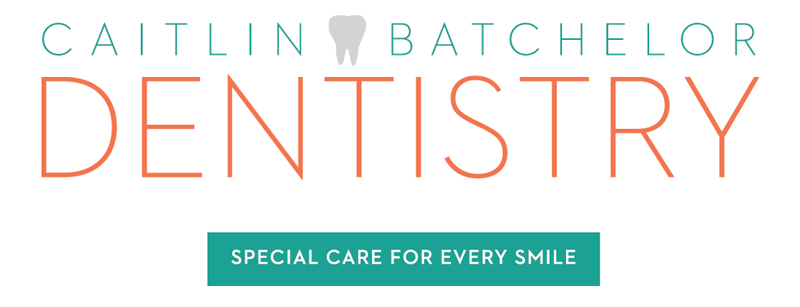Don’t Put That in Your Mouth: The Truth About Mercury Fillings
Did your dentist just discover a cavity or two in your mouth?
Don’t worry! Cavities affect over 90% of adults and are completely treatable with a tooth filling (or as we say in the dental world, “dental restoration”). During this simple procedure, tooth decay is gently removed and replaced (filled) with a durable material.
For years, the go-to material used in fillings was amalgam – a substance containing mercury and a variety of metals. Many dentists still use amalgam today. However, thanks to modern advancements, we now know there are healthier, stronger, more natural-looking options.
In this blog post, we’ll take a closer look at amalgam to help you understand why you may not want this stuff in your mouth. I’ll also be sure to leave you with a couple better (much healthier) dental filling alternatives. Let’s dive in!
Are you at risk of developing tooth decay?
Learn how to prevent cavities!
What is amalgam?
Do you or someone you know have a tooth filled with a silver-like substance? This is amalgam.
Often called “silver amalgam” due to its silvery appearance, amalgam is actually comprised of a few materials, including:
Mercury (50%)
Silver (32%)
Tin, copper, & zinc (trace amounts)
The invention of amalgam fillings
Mercury is a dangerous material. However, back in the 19th century, as researchers were looking for a way to restore and save decaying teeth. Mercury presented an interesting option.
The chemical properties of mercury were discovered to bind together with silver, copper, and other particles to form an incredibly strong material. This combined material was pliable enough to press into a tooth, but would harden to withstand the forces of biting and chewing.
The cherry on top? Amalgam was inexpensive to create, making fillings affordable for patients.
People throughout the world were excited to learn about this new, affordable, and effective way to stop tooth decay and restore strength without removing the tooth.
Amalgam fillings face controversy
Amalgam became the go-to tooth restoration material almost immediately after its discovery – but it was not without controversy. Soon after its invention, researchers began reporting harmful effects and questioned whether or not using a mercury-filled substance was a good idea.
Most believed that after the mercury had formed a compound with the other metals, it was no longer toxic. But was mercury still being slowly released into the body?
The use of amalgam fillings continues to be debated even today. The controversy continues to center on how much mercury is released into the body and how much the body absorbs it.
Some believe no mercury is released once it’s placed in the tooth. In dental school, we were taught that the mercury acts as a “carrier” material for the other metals, and once the filling was packed into the tooth, the mercury rose to the surface of the filling and was scraped away as excess material. Others point to research showing that small amounts of mercury can be released into the body as the amalgam filling wears.
In Europe, the potential danger of mercury’s effects on the environment and on mothers and children has led to amalgam fillings being outlawed completely. However, here in the US amalgam restorations are still considered safe and many traditional dentists continue to recommend this type of filling.
Today, an estimated 100 million Americans have amalgam fillings.
Natural-looking, metal-free fillings from Batchelor Dentistry
Learn More about our approach to restorative dentistry
How exactly does mercury affect your health?
Mercury has long been known to be a toxic element. In fact, the age-old phrase “mad as a hatter” originated during the 1800s when people who made felt hats (a process requiring mercury) often developed noticeable mental changes.
Mercury poisoning can be seen through various symptoms, with the most toxic effects occurring in the brain and nervous system. The symptoms of mercury poisoning include:
Vision impairment
Loss of coordination
Muscle weakness and atrophy
Speech and hearing impairment
Mood swings and other emotional changes
Insomnia
Headaches
Tremors and weakness
Skin rashes and inflammation
Mercury poisoning is especially dangerous to pregnant women and can cause problems for the fetus, including brain and spinal cord damage and developmental issues.
The fact remains: there is no known safe level of exposure to mercury.
What are the alternatives to silver (mercury) fillings?
Amalgam fillings will likely continue to be a debated subject. Thankfully, amalgam is no longer the only answer. If you have a cavity or need a tooth restoration, modern (better) alternatives are available.
Composite Restorations
Composite restorations are the result of modern advancements in dental technology. They have grown to be considered the best method for safely and effectively repairing cavities.
Unlike amalgam, composite fillings:
Are 100% non-toxic (containing no mercury)
Require less removal your healthy tooth structure
Can be securely bonded to your tooth’s surface and last for decades
Can be easily and safely repaired or replaced
Match the natural color of your teeth (you won’t be able to notice you’ve had a filling!)
Gold Fillings
Although gold fillings are not widely used, they are a better alternative to amalgam.
Gold is known as an excellent restorative material. Gold used in dental fillings is fabricated in a high-tech lab and can be used for restorations including crowns, inlays, or onlays. However, gold fillings are more expensive than other methods and don’t give you a natural look like composite fillings do.
Your smile deserves the very best
At Batchelor Dentistry, we never use amalgam fillings. I always recommend natural, tooth-colored composite fillings to restore the strength and health of your teeth and renew your smile.
Ultimately, the best kind of dental filling is no dental filling at all! At my Harrisonburg dental practice, we believe prevention is the best medicine. My team and I are here to help you decrease your risk of cavities and other dental issues through high-quality dental care and advice.
How can you reduce your risk of cavities? Take care of your teeth at home! Practice proper brushing and flossing, and eat a balanced diet. Finally, make sure you schedule a dental exam every 6 months. Together, we’ll help you achieve a healthy, beautiful smile you’re proud of.
Give us a call at (540) 432-9992 to schedule your appointment!

Dr. Caitlin Batchelor
Dr. Caitlin Batchelor earned her Doctor of Dental Surgery degree from Virginia Commonwealth University’s Medical College of Virginia. She later completed a 2-year postgraduate General Practice Residency at Wake Forest University Medical Center. Since joining this practice in 2013, Dr. Batchelor has been committed to providing individualized dental care to the specific needs and desires of her patients, taking the whole person and their unique qualities into consideration.






